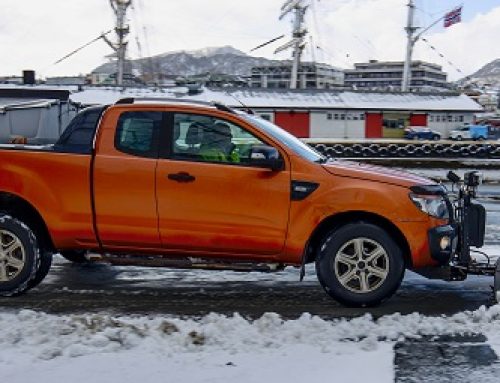LIFE JACKET WEAR / WEARING YOUR LIFE JACKET
Boaters enjoy the feel of sun and spray. So it’s tempting to boat without wearing a life jacket – especially on nice days. But modern life jackets are available in a wide variety of shapes, colors, and sizes. Many are thin and flexible. Some are built right into fishing vests or hunter coats. Others are inflatable — as compact as a scarf or fanny pack until they hit water, when they automatically fill with air.
There’s no excuse not to wear a life jacket on the water!
Things to Know:
•Certain life jackets are designed to keep your head above water and help you remain in a position which permits proper breathing.
•To meet U.S. Coast Guard requirements, a boat must have a U.S. Coast Guard-approved Type I, II, III, or V life jacket for each person aboard. Boats 16 feet and over must have at least one Type IV throwable device as well.
•All states have regulations regarding life jacket wear by children.
•Adult-sized life jackets will not work for children. Special life jackets are available. To work correctly, a life jacket must be worn, fit snugly, and not allow the child’s chin or ears to slip through.
• Life jackets should be tested for wear and buoyancy at least once each year. Waterlogged, faded, or leaky jackets should be discarded.
•Life jackets must be properly stowed.
•A life jacket — especially a snug-fitting flotation coat or deck-suit style — can help you survive in cold water.
How Do Life Jackets Save Lives?
• When capsized in rough water.
• When sinking in unexpectedly heavy sea conditions.
• When thrown from the boat as a result of a collision.
• When injured by rocks or submerged objects.
• When unconscious from carbon monoxide fumes.
• When tossed into freezing water.
• When thrown off balance while fishing.
• When unable to swim because of heavy or waterlogged clothing.
All recreational boats must carry one wearable lifejacket (Type I, II, III or Type V lifejacket) for each person aboard. A Type V lifejacket provides performance of either a Type I, II, or III lifejacket (as marked on its label) and must be used according to the label requirements. Any boat 16ft and longer (except canoes and kayaks) must also carry one throwable lifejacket (Type IV lifejacket).
Lifejackets must be
•Coast Guard approved,
•in good and serviceable condition, and
•the appropriate size for the intended user.
Accessibility
•Wearable lifejackets must be readily accessible.
•You must be able to put them on in a reasonable amount of time in an emergency (vessel sinking, on fire, etc.).
•They should not be stowed in plastic bags, in locked or closed compartments or have other gear stowed on top of them.
•The best lifejacket is the one you will wear.
•Though not required, a lifejacket should be worn at all times when the vessel is underway. A wearable lifejacket can save your life, but only if you wear it.
•Throwable devices must be immediately available for use.
Inflatable Lifejackets
•Inflatable lifejackets may be more comfortable to wear.
•The best lifejacket is the one you will wear.
•Inflatable lifejackets require the user to pay careful attention to the condition of the device.
•Inflatable lifejackets must have a full cylinder and all status indicators on the inflator must be green, or the device is NOT serviceable, and does NOT satisfy the requirement to carry lifejackets.
•Coast Guard Approved Inflatable lifejacket’s are authorized for use on recreational boats by person at least 16 years of age.
Child Lifejacket Requirements
Some states require that children wear lifejackets
•applies to children of specific ages
•applies to certain sizes of boats
•applies to specific boating operations
Check with your state boating safety officials.
Child lifejacket approvals are based on the child’s weight. Check the “User Weight” on the label, or the approval statement that will read something like “Approved for use on recreational boats and uninspected commercial vessels not carrying passengers for hire, by persons weighing __ lbs”. They can be marked “less than 30”, “30 to 50”, “less than 50”, or “50 to 90”.
Lifejacket requirements for certain boating activities under state laws
The Coast Guard recommends and many states require wearing lifejackets:
•For water skiing and other towed activities (use a lifejacket marked for water skiing).
•While operating personal watercraft (PWC) (use a lifejacket marked for water skiing or PWC use).
•During white water boating activities.
•While sailboarding (under Federal law, sailboards are not “boats”).
Check with your state boating safety officials.
Federal law does not require lifejackets on racing shells, rowing sculls, racing canoes, and racing kayaks; state laws vary. Check with your state boating safety officials.
If you are boating in an area under the jurisdiction of the Army Corps of Engineers, or a federal, state, or local park authority, other rules may apply.
Lifejacket Flotation
There are three basic kinds of lifejacket flotation in the five types of lifejackets with the following characteristics:
Inherently Buoyant (primarily Foam)
•Adult, Youth, Child, and Infant sizes
•For swimmers & non-swimmers
•Wearable & throwable styles
•Some designed for water sports
Inflatable
•The most compact
•Sizes only for adults
•Only recommended for swimmers
•Wearable styles only
•Some with the best in-water performance
Hybrid (Foam & Inflation)
•Reliable
•Adult, Youth, and Child sizes
•For swimmers & non-swimmers
•Wearable styles only
•Some designed for water sports


